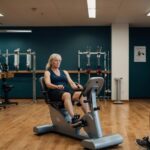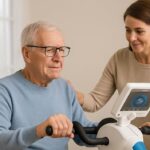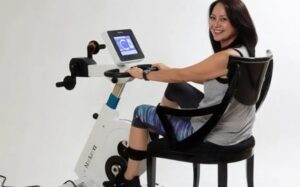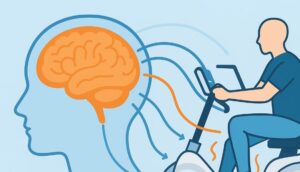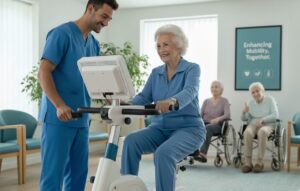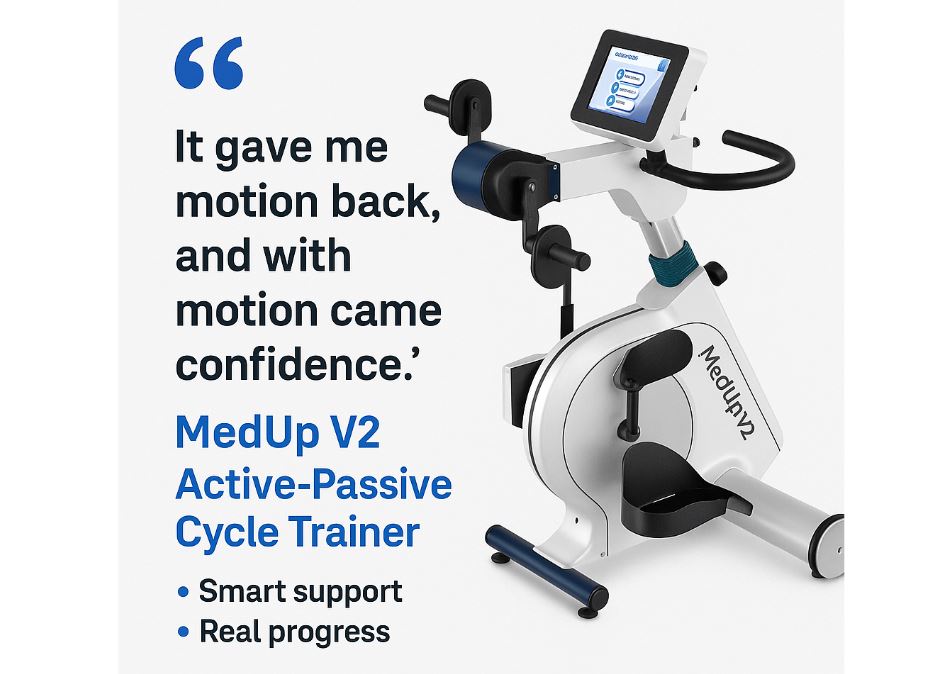
Mobility loss doesn’t just limit movement—it limits life. For individuals recovering from strokes, spinal cord injuries, multiple sclerosis, or severe muscle weakness, even small daily tasks can feel monumental. But technology is changing that. Adaptive cycling—especially with smart, medically engineered devices like the MedUp V2 Active-Passive Cycle Trainer—is becoming a powerful tool in personalized rehabilitation.
What Is Adaptive Cycling?
Adaptive cycling refers to any cycle-based exercise technology tailored to people with limited mobility. Unlike traditional bikes or fitness equipment, these systems support passive, active, or motor-assisted pedaling. That flexibility opens the door to safe, consistent exercise—even for users who can’t initiate movement on their own.
But not all adaptive cycling systems are created equal. The MedUp V2 stands out with intelligent design, clinical-grade safety features, and a feedback-rich interface that encourages real progress.
Active-Passive Cycling: Why It Works
What makes active-passive cycling so effective is its adaptability. Let’s break it down:
- Passive Mode: Ideal for early-stage recovery or individuals with no voluntary movement. The machine gently moves the legs or arms, improving circulation, reducing stiffness, and preventing atrophy.
- Active Mode: When strength starts to return, users can begin pedaling on their own with or without resistance.
- Assisted Mode: The system detects a user’s effort and fills in the gaps, helping them complete the motion in real time.
The MedUp V2 goes a step further. It uses smart sensors to detect spasms, irregular pedaling patterns, and muscle asymmetries—then auto-adjusts for comfort and safety. It’s like having a physical therapist baked into the machine.
Why It Matters: Real-Life Results
Mobility isn’t just about physical capability—it’s about independence and dignity. The people using adaptive cycling technology like the MedUp V2 aren’t training for marathons. They’re training to get back into their lives.
Consider a stroke survivor that is two months post-stroke, still unable to lift his left foot off the ground. Daily use with the MedUp V2, guided by his home therapist, can help accelerate rehab and to move a patient towards their first assisted step. Progress provides hope to patients, which can also benefit their state of mind and determination.
Controlled cycling programs are backed by research for their role in neuroplasticity and recovery. According to the National Library of Medicine, adaptive cycling improves coordination, balance, and cardiovascular endurance for individuals with physical impairments.
The Mental Boost Behind Movement
What often gets overlooked in rehab is how movement impacts mindset. Just being able to do something—even if the machine is doing most of the work—sparks hope.
Users report feeling more in control of their recovery. That sense of ownership leads to greater compliance with therapy, faster progress, and reduced feelings of frustration or depression.
In other words, motion creates momentum—not just physically, but emotionally.
Designed for Access, Built for Independence
The MedUp V2 isn’t just effective—it’s accessible. Here’s how:
- Compact and easy to use: No complex setup. Plug it in, strap in, and go.
- Upper and lower limb training: Target arms or legs based on patient needs.
- Remote control interface: Adjust speed, resistance, and mode with minimal effort.
- Symmetry training: Promotes balanced motor recovery between left and right sides.
- Safe for solo use: Ideal for home care or self-managed therapy.
It’s also engineered for professionals. Whether in a rehab center, hospital, or outpatient clinic, MedUp’s streamlined design integrates easily into patient programs.
Learn more about how MedUp V2 supports therapists and clinics here.
Who Benefits Most?
Adaptive cycling is a powerful rehab option for:
- Stroke survivors
- People with spinal cord injuries
- Individuals living with MS or Parkinson’s
- Elderly patients with limited mobility
- Post-operative orthopedic patients
It’s not about pushing limits—it’s about meeting people where they are and helping them move forward, safely and steadily.
The Future of Rehab Is Personalized
One-size-fits-all doesn’t work in rehabilitation. Every injury, every condition, every person is different. The future is smart, tailored, and responsive—and adaptive cycling fits squarely into that vision.
The MedUp V2 is more than a machine. It’s a daily ally in recovery, giving users control, progress, and proof that small steps are still steps forward.
Ready to Bring Motion Back?
Whether you’re a caregiver, physical therapist, or someone recovering from a mobility-limiting condition, adaptive cycling could be the key to unlocking progress.
Explore the full specs and benefits of the MedUp V2 here.
